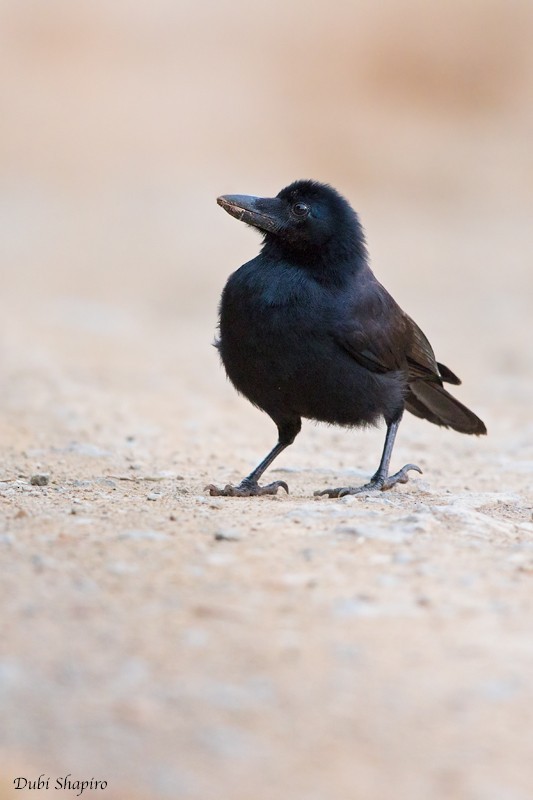New Caledonian Crow
A species of Crows Scientific name : Corvus moneduloides Genus : Crows
New Caledonian Crow, A species of Crows
Botanical name: Corvus moneduloides
Genus: Crows
Content
Description General Info
 Photo By Dubi Shapiro
Photo By Dubi Shapiro Description
The New Caledonian crow is a moderate-sized crow, (40 cm in length), similar in size to the house crow, but less slender-looking. The bird has an all-black appearance with a rich gloss to its feathers of purple, dark blue and some green in good light. The beak, feet and legs are all black. The beak is moderate in size but is unusual in that the tip of the lower mandible is angled upwards, making it somewhat chisel-like in profile. It has been suggested that this beak morphology evolved due to the selective pressure of needing to hold a tool straight. The vocalization is described as a soft "waa-waa" or "wak-wak", and sometimes as a hoarse "qua-qua" or "waaaark". Across New Caledonia, the bird is often referred to as a 'qua-qua' due to its distinctive call. 
Size
43 cm
Nest Placement
Tree
Feeding Habits
New Caledonian Crow's diet is diverse, including insects, fruits, nuts, seeds, and small animals. New Caledonian Crow is known for using tools to obtain food, such as dropping nuts to crack them or using sticks to extract insects from crevices, showcasing sophisticated foraging behaviors.
Habitat
The new Caledonian Crow is predominantly found in a range of forested environments, including dense woodlands and lush savannas. These birds also adapt to modified landscapes and can be seen in areas with plantations. The habitats are characterized by their rich vegetation and the availability of trees, which provide both food sources and materials necessary for the new Caledonian Crow's advanced tool-using behaviors.
Dite type
Omnivorous
General Info
Feeding Habits
Bird food type
Behavior
The New Caledonian crow eats a wide range of food, including many types of insects and other invertebrates (some caught in flight with great agility, including night-flying insects which it catches at dusk), eggs and nestlings, small mammals, snails (which it drops from a height onto hard stones), and various nuts and seeds. This species is known for using plant material to create stick and leaf tools to capture prey hiding in cracks and crevices. These tools can have naturally occurring barbs, or are sometimes fashioned into hooks by the birds. The tool is inserted into the crack or crevice in the log or branch, and the prey is agitated into biting the tool. The crow then withdraws the tool with prey still attached, and devours the prey. Grubs caught in this way have been shown to be an integral part of the crows' diet. The New Caledonian crow appears to fill the ecological niche of the woodpeckers and the woodpecker finch of the Galapagos, since the latter and New Caledonia lack woodpeckers. The feeding method of the woodpecker finch differs in that it stabs at grubs and levers them slowly out of the log using a small twig. The nest of the New Caledonian crow is built high in a tree with usually 2–3 eggs laid from September to November. 
Distribution Area
The bird is endemic to the islands of New Caledonia in the Pacific, living in primary forest. It inhabits only the main island, Grande Terre, and one of the Loyalty Islands, Maré Island. 

 Photo By Dubi Shapiro
Photo By Dubi Shapiro Scientific Classification
Phylum
Chordates Class
Birds Order
Perching birds Family
Crows and jays Genus
Crows Species
New Caledonian Crow